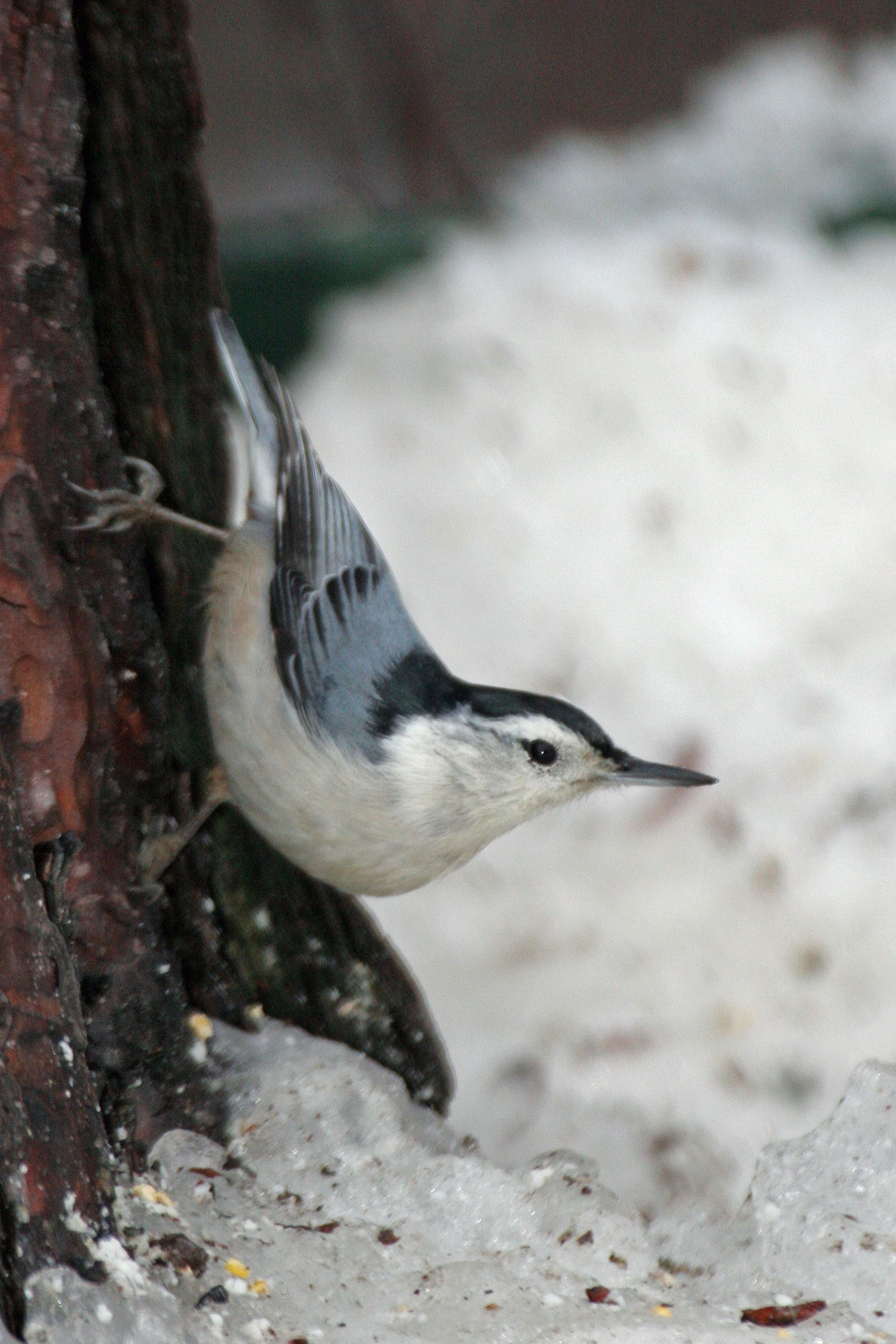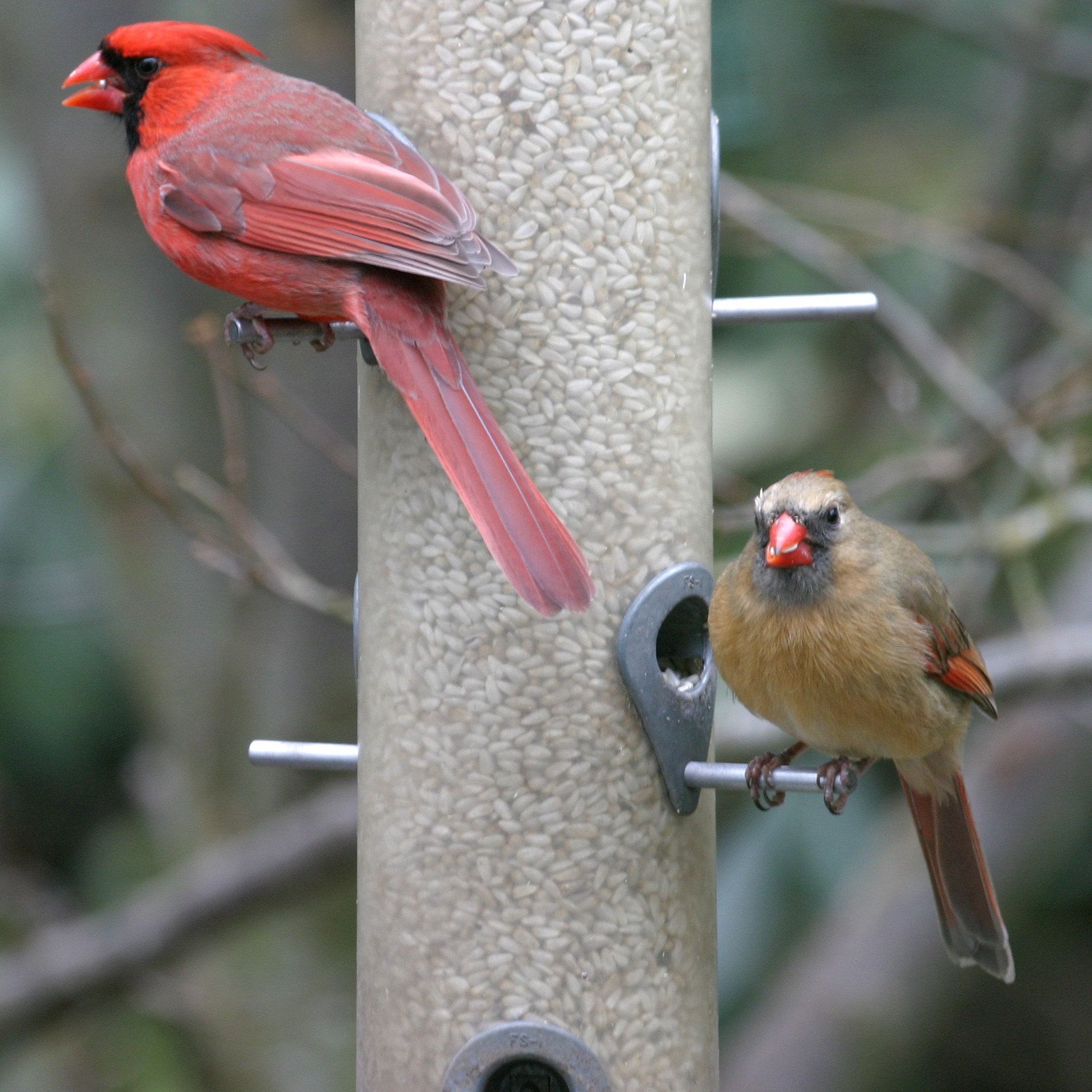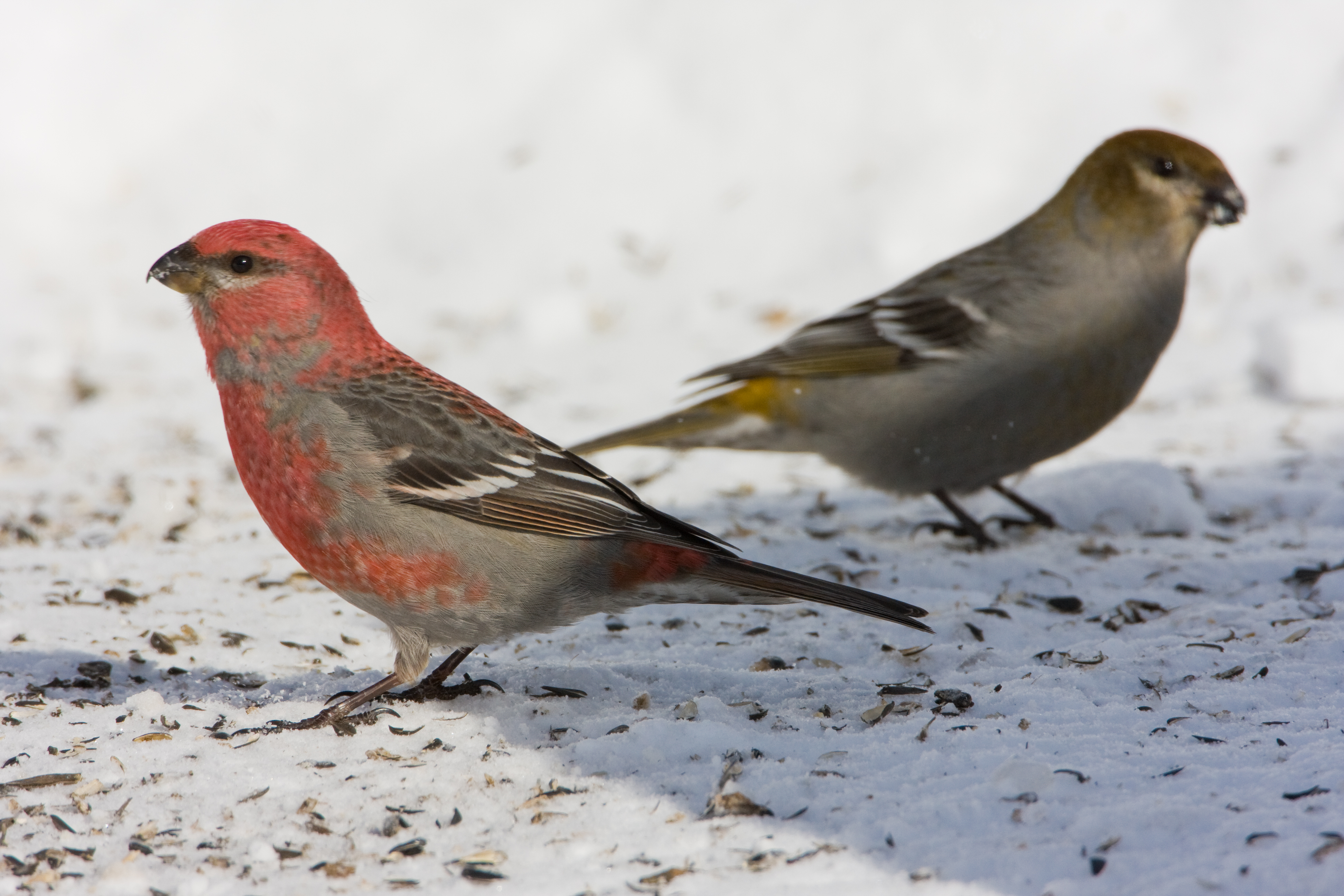
More Birds You Can Enjoy In Your Own Backyard
By: Jess Kelley – Adirondack Council Donor Database Manager
Tuesday, Feb. 21, 2023
As more and more visitors flock to the Adirondacks to enjoy its waters, air, and abundant wildlands, there are all kinds of activities that residents and visitors alike can enjoy without having to hoof it into the backcountry. One of my favorite pastimes is birdwatching. Although I am most definitely a novice, not an expert, I enjoy seeing new feathered friends gather around our feeders or perch in a bush or tree in our yard. For me, part of the fun is the puzzle birdwatching becomes when I break out the trusty New York State Field Guide to try to identify them. Here are a few more of my favorites that you can see in the wintertime in the High Peaks or right in your backyard.
White-Breasted Nuthatch
One of my absolute favorite birds of all time is the White-Breasted Nuthatch (Sitta carolinensis), which can be found in most of the United States all year round. When my family and I lived in the Southern Tier of New York near the Finger Lakes, they were everywhere! They aren’t as abundant in the Adirondacks but as the climate warms, they are heading north. Recently, the nuthatch has occasionally been spotted in the boreal forests in the Park.

Nuthatches are easily spotted by their quirky manners, spending most of their time upside down, hopping down tree trunks to look for insects to eat. They can also be identified by listening for their distinctive call, which I’ve heard described as a honking horn, a backup beep, or a “nasal yammering.” With the way their eyes have a little upturn and their bills pointing up, they almost look as if they’re smiling and always in a good mood.
From their name, you can deduce that the underbelly is all white, while the wings and tail are gray, black, and white with a horizontal stripe-like pattern. A black patch runs from the end of their beak to the top of their wings, and they have fluffy white cheeks. Their tiny feet have sharp claws that they use to grip the bark of trees as they forage for insects in crevices. I’ve seen them turn their little heads almost all the way around to use their keen eyesight to look into cracks in the bark for a snack.
Nuthatches are opportunists in the winter and will eat seeds out of feeders or the occasional block of suet or peanut butter treat; they return to eating almost exclusively insects in the warmer months. Fun fact about the white-breasted nuthatch: in wintertime, breeding pairs will forage with a flock of chickadees or tufted titmice in order to increase their odds of both finding food and keeping an eye out for predators. If you see one nuthatch in a flock of birds, its mate is most likely close by.
Northern Cardinal
Another easily recognizable and widespread bird is the Northern Cardinal (Cardinalis cardinalis), named for the bright red feathers of the males of the species. Like many birds, the males have the brightest, most vibrant, and frankly flashy red feathers. Meanwhile, the females are a bit smaller with muted colors, mostly brown with some red highlights on the wings and crest. Both males and females have bright orange-red, short, stocky beaks and high crests on the top of their heads, which can lay down a bit when they’re relaxed.

Cardinals primarily eat seeds, meaning they will be a frequent visitor to any backyard bird feeder, although they also like to ground forage for seeds. Cardinals have one of the most beautiful songs - it sounds almost like a high to medium pitched lilting whistle. Some say the song sounds a bit like “cheer-cheer-cheer, pretty-pretty-pretty” with a little trill at the end. Northern cardinals live primarily in the eastern and central US and down into parts of Mexico.
One of my favorite memories of an encounter with a cardinal, other than just watching them in my yard, was on a family trip to the Outer Banks of North Carolina. We convinced my mom to put her hand out with a little pile of seeds, and a cardinal came over to eat right out of her hand on the deck overlooking the beach. They are one bird that doesn’t seem to scare as easily as others, so you can watch them for quite some time. I see them primarily in the bushes, where they like to nest, or by the feeders. Fun fact: the Northern Cardinal is so popular that it is the state bird of seven different states!
House Finch
My family has a flock of backyard chickens we maintain for eggs and as pets, and one of their favorite treats is black oil sunflower seeds. Whenever we spread handfuls of the treats out in the yard, we inevitably get a flock of another bird that also loves the seeds, the House Finch (Haemorhous mexicanus). We’ve had flocks of 20-30 or more come forage around the edges of the chicken pen to crack open the shells to get the tasty morsels in the middle.

House Finches are most easily identifiable by the males of the species. They have gray-brown base feathers with patches of red on their head and chest that can extend down to their legs. The females also have a gray-brown base but lack the red color and are more of a yellow-brown. They have short beaks with a curved upper portion that’s perfect for eating bugs and seeds. Finches are vegetarians, and males get their red feather color from the foods they eat, specifically those rich in carotenoids like buds, fruits, and berries. The more successful they are in finding and consuming these foods, the brighter their feathers are. Females tend to choose the brightest males as mates as they’re the best at finding good food and will be able to help provide for a growing family.
Interestingly, the House Finch used to be found only on the West Coast of the United States until about the 1940s when they were introduced to New York City as a cage bird and subsequently released into the wild. They proliferated until they spread almost across the entire U.S., with just a section in the middle of the country where they haven’t been spotted. Perhaps in the next 50 years, they’ll complete their invasion and cover the entire nation.

Jess Kelley is the Adirondack Council's Development Assistant. She is a native of Keene, NY. Upon graduation from Keuka College, she began her career as a high school biology teacher. After earning a master’s degree in Cell and Molecular Biology from the Illinois Institute of Technology, Jess worked as a Stem Cell Biologist for a Fortune 500 company. As an 8th generation ADKer, she returned to her beloved Adirondacks with her husband and son to be closer to her extended family and friends. In her spare time, she enjoys camping, fishing, singing, and making custom jewelry. She’s thrilled to be a part of the team at the Adirondack Council working with colleagues who share her passion for protecting the wildlands of the Adirondacks.




